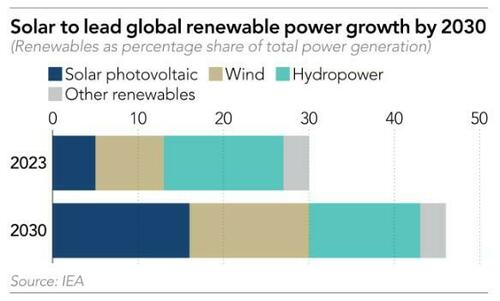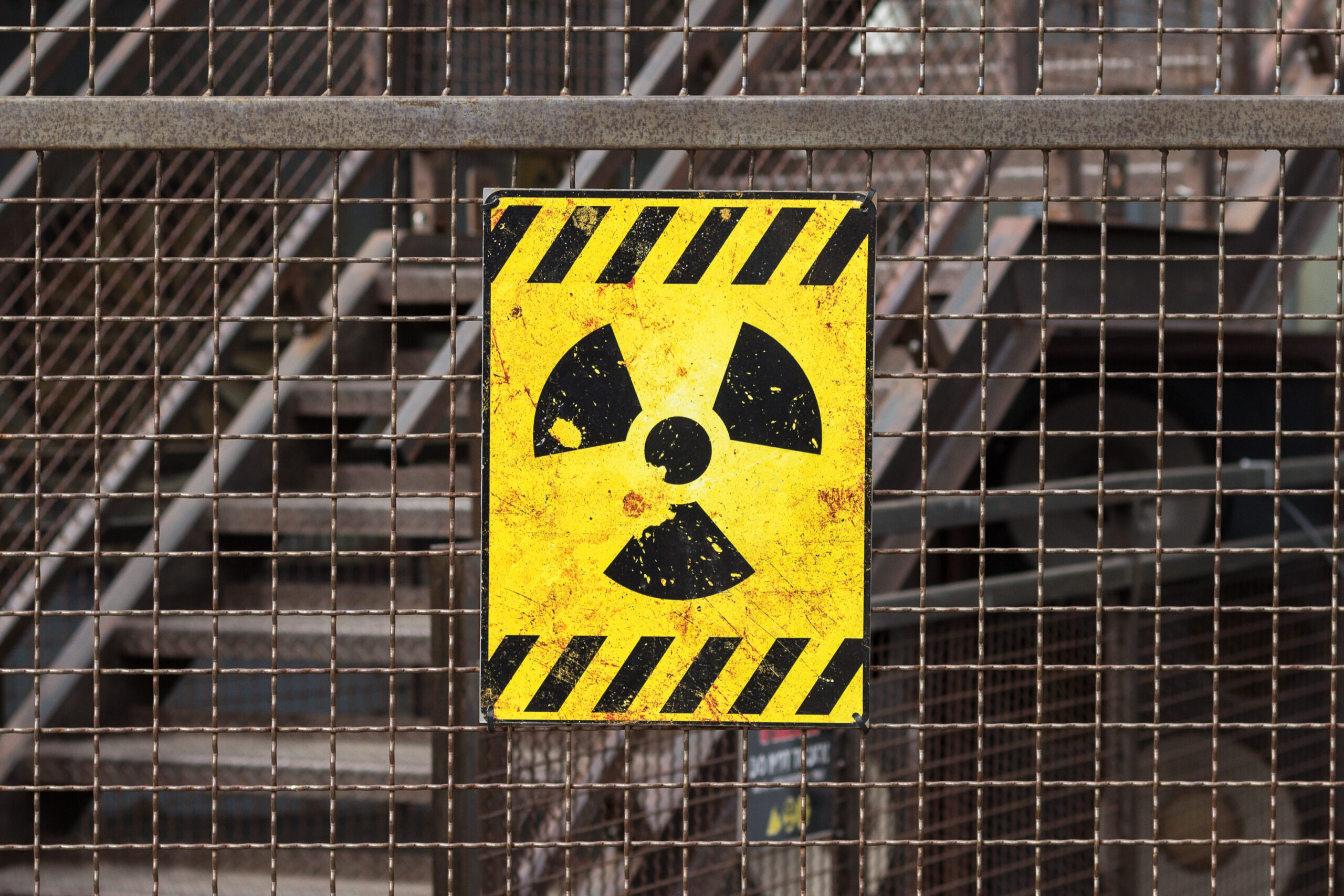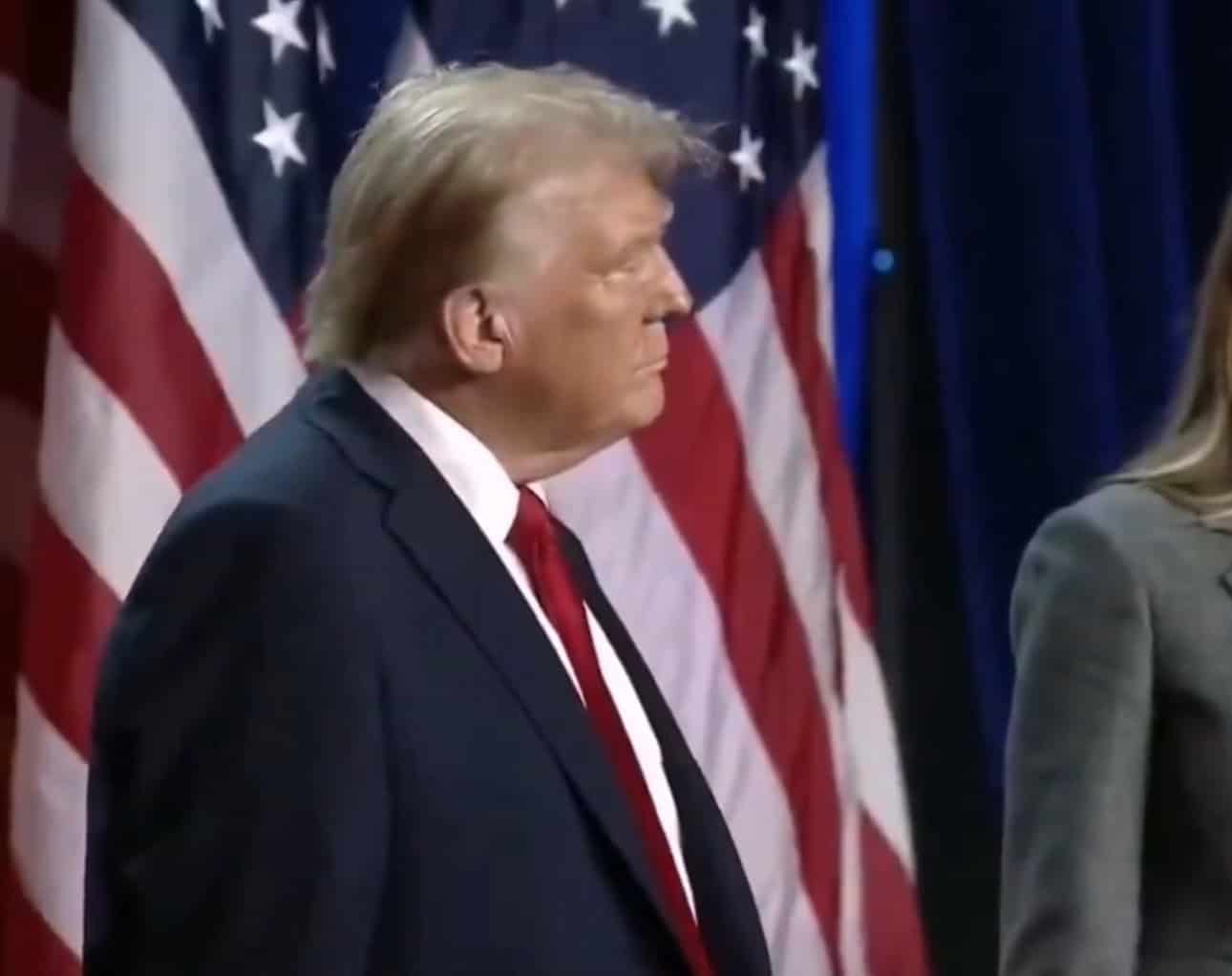Trump Appointments Signal Aim To Boost US Energy Investment And Production
Trump Appointments Signal Aim To Boost US Energy Investment And Production
By Ed Crooks of Wood Mackenzie
“Personnel is policy.” That aphorism about the realities of US presidential government was coined by Scot Faulkner, who was director of personnel for Ronald Reagan’s triumphant election campaign in 1980. What he meant was that, while US presidents can do almost anything, they can’t do everything. The day-to-day business of the administration is carried on by appointed officials. And if presidents want to make real progress towards their policy objectives, they need to make sure that their officials are as committed to those goals as they are.
That is why President-elect Donald Trump’s first two picks to be his senior energy officials are particularly significant. There is still a great deal of uncertainty around exactly how energy policy will play out in his second administration. But the announcements he has made give a clear sense of the direction he wants to set and the objectives he wants to achieve during his four-year term.
Last week, President-elect Trump named Chris Wright, the chief executive of oilfield services company Liberty Energy, to be his energy secretary, and Doug Burgum, governor of North Dakota, to be the interior secretary and head of a new National Energy Council at the White House.
The common thread in the thinking on energy expressed by both Wright and Burgum is that they want to boost production of all types of energy, including fossil fuels. They do not deny that human-caused climate change is a real threat that needs to be addressed. But they argue that there are other priorities for policy that are more important and more urgent, and that oil and gas can continue to play the central role in the global energy system into the indefinite future.
If they get to take the reins of energy policy-making under the Trump administration, they will undoubtedly aim to help the oil and gas industry in every way possible. But several low-carbon sectors could also benefit, or at least not be hit as hard as they might have feared.
Meet Chris Wright and Governor Doug Burgum
Announcing their nominations, President-elect Trump said that Wright and Burgum would be working on cutting red tape, enhancing private sector investment and focusing on innovation, with the aim of boosting energy production to cut prices and “win the AI arms race with China (and others)”.
Chris Wright has become one of the highest-profile CEOs in the industry thanks to his tireless advocacy for American energy in general, and oil and gas in particular. He has made his case in a variety of public forums, including YouTube videos and in a 180-page report titled ‘Bettering human lives’.
That report makes its argument in 10 key points, which include: “Global demand for oil, natural gas, and coal are all at record levels and rising — no energy transition has begun” and “Zero Energy Poverty by 2050 is a superior goal compared to Net Zero [emissions] 2050.”
Wright summarises his position on climate change like this:
“Climate change is a real and global challenge that we should and can address. However, representing it as the most urgent threat to humanity today displaces concerns about more pressing threats of malnutrition, access to clean water, air pollution, endemic diseases, and human rights, among others.”
Tackling those other more pressing problems, he argues, would be helped by the strongest possible growth in US oil and gas production. This would displace supplies from authoritarian regimes and geopolitical rivals of the US and substitute for dirtier fuels, including coal and traditional biomass.
On policy, Wright warns that the 2022 Inflation Reduction Act (IRA), which extended and expanded tax credits for a range of low-carbon energy technologies, “appears poised to drive the U.S. electricity grid along the European path [to] higher prices and more grid stability problems”.
He is not opposed to all forms of low-carbon energy, but says the world needs a massive increase in research and innovation, as opposed to subsidies for existing technologies. His company has worked on low-carbon energy sources, including advanced geothermal, small modular nuclear reactors (SMRs) and sodium-ion batteries. The world needs more and better energy, which means contributions from “all viable energy technologies,” Wright says.
One of the peculiarities of the US system of government is that the energy secretary – the job that Chris Wright is being proposed for – does not have primary responsibility for many of the decisions most relevant to the energy industry. A US energy secretary does have responsibility for overseeing energy policy, but the most vital part of the job relates to nuclear weapons. The secretary is tasked with “maintaining a safe, secure and effective nuclear deterrent” for the US, and reducing the threat of nuclear proliferation.
Many of the key decisions related to energy, such as oil and gas leasing programmes, lie with the Department of the Interior. So the proposal that Governor Burgum of North Dakota should head that department, as well as the new White House energy council, is also highly significant for the industry.
Governor Burgum, like Wright, has a record of recognising the need to act on climate change while also aiming to boost oil and gas production. In 2021, he set a goal of reaching net zero emissions for North Dakota – described as “carbon neutral status” – by 2030. That is a much more ambitious schedule than California’s – the Golden State is aiming for net zero by 2045.
Another crucial difference is that Governor Burgum has envisaged his state reaching net zero largely through carbon capture and storage (CCS). As he has pointed out, North Dakota hit the “geologic jackpot” in its potential for sub-surface storage of carbon dioxide. Its estimated capacity of 250 billion tons could take all of the US’s carbon dioxide emissions from energy for almost 50 years.
In a sign of North Dakota’s enthusiasm for CCS, the state’s Public Service Commission last week voted unanimously to approve the route permit for Summit Carbon Solutions’ proposed US$8 billion carbon dioxide pipeline system, which would take captured emissions from ethanol plants for storage.
But despite his support for decarbonisation, Governor Burgum has also been a strong critic of the Biden administration’s energy policies. He signed up to a joint statement with other Republican governors in June, arguing that the president’s “rhetorical and regulatory hostility towards traditional energy” was holding back US oil and gas production.
One sector that could be particularly favoured under the new administration is gas-fired power generation. President-elect Trump said in the statement announcing Governor Burgum’s nomination that he wanted to “undo the damage done by the Democrats to our Nation’s Electrical Grid, by dramatically increasing baseload power”. That will certainly mean acting on his pledge to scrap President Biden’s emissions rules for power plants, which could potentially have ended up forcing gas-fired generation to shut down. But he could go further. A national version of the Texas system that subsidises gas-fired power plants is possible.
Wood Mackenzie view
Some of the critical issues for energy policy under the second Trump administration remain highly uncertain. The future of the IRA tax credits for low-carbon energy is likely to be decided by a tight vote in the House of Representatives, given the Republicans’ slender majority there. Energy industry leaders – including Darren Woods, chief executive of ExxonMobil, who last week attended the COP29 climate talks in Azerbaijan – have urged President-elect Trump not to sweep away all of President Biden’s energy policies.
“I don’t think the stops and starts are the right thing for businesses,” Woods told the Wall Street Journal. “It is extremely inefficient.”
But while the prospect of a sharp reversal in policy is a concern, the appointment of two senior officials who have been champions for investment in energy, with a brief to continue that work in the federal government, will be welcomed by many in the industry.
The power and renewables sector is threatened by the potential curtailment or elimination of the production and investment tax credits (PTC and ITC) for wind, solar and storage. But it could benefit from other changes under a Trump administration, including permitting reform and regulatory changes that could make it easier to add new transmission capacity.
Wood Mackenzie’s “severe downside scenario” represents a worst-case outlook, with total installations of wind, solar and storage over the next decade about 30% lower than in our previous base case forecast. But for that to play out, several factors have to turn against the industry, including not only a phase-out of the PTC and ITC, but also increased permitting challenges. If the new administration lives up to its rhetoric about supporting investment in all kinds of energy, permitting and regulation could become easier, not harder.
However, the new administration’s plans raise important questions about the balance of supply and demand for energy, and especially for natural gas. President-elect Trump has promised to end immediately the “pause” on approvals for new LNG export projects, which will add to demand for US gas over time. A surge in gas-fired power generation, which the new administration sees as important for supplying new data centres for AI, would add additional demand pressure.
On the supply side, Wood Mackenzie analysts think government regulations and access to acreage are not the most important issues. US oil and gas production is determined principally by commodity prices, cash flows and corporate capital allocation strategies. The federal government can take actions that will help, including expediting investment in new pipeline infrastructure. But it cannot guarantee that additional production will flow.
Those conditions, with stronger demand but a limited supply response, would be bullish for energy prices. Although President-elect Trump’s stated goal is to drive down energy costs for American consumers, it is possible that his policies could have the opposite effect.
COP29 makes little progress in its first week
The election victory for President-elect Trump, who plans to take the US out of the Paris climate agreement for a second time, cast a shadow over the first week of the COP29 climate talks in Baku, Azerbaijan. There were more signs of disharmony among the assembled nations, with Argentina withdrawing its official delegation, and France’s environment minister choosing not to attend after a diplomatic spat with the hosts Azerbaijan.
Meanwhile, behind the scenes, negotiators are attempting to secure a global agreement on climate finance, which could pledge more than US$1 trillion a year in investment, loans and grants to low- and middle-income countries to support emissions reductions and adaptation to the impacts of climate change. So far, there appears to have been little movement on agreeing a deal.
The conference began with an announcement of significant progress towards finalising the rules for international carbon markets under Article 6 of the Paris agreement. But on that issue, too, much work remains before the market can start working as intended.
One group of leading figures in international climate policy has argued that the entire process of COP negotiations is “no longer fit for purpose”.
Tyler Durden
Thu, 11/21/2024 – 06:30
There Are No “Easy Wars” Left To Fight, But Do Not Mistake The Longing For One
There Are No “Easy Wars” Left To Fight, But Do Not Mistake The Longing For One
Submitted by Alastair Crooke
There Are No “Easy Wars” Left To Fight, But Do Not Mistake The Longing For One
Israelis, as a whole, are exhibiting a rosy assurance that they can harness Trump, if not to the full annexation of the Occupied Territories (Trump in his first term did not support such annexation), but rather, to ensnare him into a war on Iran. Many (even most) Israelis are raring for war on Iran and an aggrandisement of their territory (devoid of Arabs). They are believing the puffery that Iran ‘lies naked’, staggeringly vulnerable, before a US and Israeli military strike.
Trump’s Team nominations, so far, reveal a foreign policy squad of fierce supporters of Israel and of passionate hostility to Iran. The Israeli media term it a ‘dream team’ for Netanyahu. It certainly looks that way.
The Israel Lobby could not have asked for more. They have got it. And with the new CIA chief, they get a known ultra China hawk as a bonus.
But in the domestic sphere the tone is precisely the converse: The key nomination for ‘cleaning the stables’ is Matt Gaetz as Attorney General; he is a real “bomb thrower”. And for the Intelligence clean-up, Tulsi Gabbard is appointed as Director of National Intelligence. All intelligence agencies will report to her, and she will be responsible for the President’s Daily briefing. The intel assessments may thus begin to reflect something closer to reality.
The deep Inter-Agency structure has reason to be very afraid; they are panicking — especially over Gaetz.
Elon Musk and Vivek Ramaswamy have the near impossible task of cutting out-of-control federal spending and currency printing. The System is deeply dependent on the bloat of government spending to keep the cogs and levers of the mammoth ‘security’ boondoggle whirring. It is not going to be yielded up without a bitter fight.
So, on the one hand, the Lobby gets a dream team (Israel), but on the other side (the domestic sphere), it gets a renegade team.
This must be deliberate. Trump knows that Biden’s legacy of bloating GDP with government jobs and excessive public spending is the real ‘time bomb’ awaiting him. Again the withdrawal symptoms, as the drug of easy money is withdrawn, may prove incendiary. Moving to a structure of tariffs and low taxes will be disruptive.
Whether deliberate or not, Trump is keeping his cards close to his chest. We have only glimpses of intent — and the water is being seriously muddied by the infamous ‘Inter-Agency’ grandees. For example, in respect to the Pentagon sanctioning private-sector contractors to work in Ukraine, this was done in coordination with “inter-agency stakeholders”.
The old nemesis that paralyzed his first term again faces Trump. Then, during the Ukraine impeachment process, one witness (Vindman), when asked why he would not defer to the President’s explicit instructions, replied that whilst Trump has his view on Ukraine policy, that stance did NOT align with that of the ‘Inter-Agency’ agreed position. In plain language, Vindman denied that a US president has agency in foreign policy formulation.
In short, the ‘Inter-Agency structure’ was signalling to Trump that military support for Ukraine must continue.
When the Washington Post published their detailed story of a Trump-Putin phone call — that the Kremlin emphatically states never happened — the deep structures of policy were simply telling Trump that it would be they who determine what the shape of the US ‘solution’ for Ukraine would be.
Similarly, when Netanyahu boasts to have spoken to Trump and that Trump “shares” his views regarding Iran, Trump was being indirectly instructed what his policy towards Iran needs to be. All the (false) rumours about appointments to his Team too, were but the interagency signalling their choices for his key posts. No wonder confusion reigns.
So, what can be deduced at this early stage? If there is a common thread, it has been a constant refrain that Trump is against war. And that he demands from his picks personal loyalty and no ties of obligation to the Lobby or the Swamp.
So, is the packing of his Administration with ‘Israel Firsters’ an indication that Trump is edging toward a ‘Realist’s Faustian pact’ to destroy Iran in order to cripple China’s energy supply source (90% from Iran), and thus weaken China — Two birds with one stone, so to speak?
The collapse of Iran would also weaken Russia and hobble the BRICS’ transport-corridor projects. Central Asia needs both Iranian energy and its key transport corridors linking China, Iran, and Russia as primary nodes of Eurasian commerce.
When the RAND Organisation, the Pentagon think-tank, recently published a landmark appraisal of the 2022 National Defence Strategy (NDS), its findings were stark: An unrelentingly bleak analysis of every aspect of the US war machine. In brief, the US is “not prepared”, the appraisal argued, in any meaningful way for serious ‘competition’ with its major adversaries — and is vulnerable or even significantly outmatched in every sphere of warfare.
The US, the RAND appraisal continues, could in short order be drawn into a war across multiple theatres with peer and near-peer adversaries — and it could lose. It warns that the US public has not internalized the costs of the US losing its position as the world superpower. The US must therefore engage globally with a presence—military, diplomatic, and economic—to preserve influence worldwide.
Indeed, as one respected commentator has noted, the ‘Empire at all Costs’ cult (i.e. the RAND Organisation zeitgeist) is now “more desperate than ever to find a war it can fight to restore its fortunes and prestige”.
And China would be altogether a different proposition for a demonstrative act of destruction in order “to preserve US influence worldwide” — for the US is “not prepared” for serious conflict with its peer adversaries: Russia or China, RAND says.
The straitened situation of the US after decades of fiscal excess and offshoring (the backdrop to its current weakened military industrial base) now makes kinetic war with China or Russia or “across multiple theatres” a prospect to be shunned.
The point that the commentator above makes is that there are no ‘easy wars’ left to fight. And that the reality (brutally outlined by RAND) is that the US can choose one — and only one war to fight. Trump may not want any war, but the Lobby grandees — all supporters of Israel, if not active Zionists supporting the displacement of Palestinians — want war. And they believe they can get one.
Put starkly and plainly: Has Trump thought this through? Have the others in the Trump Team reminded him that in today’s world, with US military strength slipping away, there no longer are any ‘easy wars’ to fight, although Zionists believe that with a decapitation strike on Iran’s religious and IRGC leadership (on the lines of the Israel’s strikes on Hizbullah leaders in Beirut), the Iranian people would rise up against their leaders, and side with Israel for a ‘New Middle East’.
Netanyahu has just made his second broadcast to the Iranian people promising them early salvation. He and his government are not waiting to ask Trump to nod his consent to the annexation of all Occupied Palestinian Territories. That project is being implemented on the ground. It is unfolding now. Netanyahu and his cabinet have the ethnic cleansing ‘bit between their teeth’. Will Trump be able to roll it back? How so? Or will he succumb to becoming ‘genocide Don’?
This putative ‘Iran War’ is following the same narrative cycle as with Russia: ‘Russia is weak; its military is poorly trained; its equipment mostly recycled from the Soviet era; its missiles and artillery in short supply’. Zbig Brzezinski earlier had taken the logic to its conclusion in The Grand Chessboard (1997): Russia would have no choice but to submit to the expansion of NATO and to the geopolitical dictates of the US. That was ‘then’ (a little more than a year ago). Russia took the western challenge — and today is in the driving seat in Ukraine, whilst the West looks on helplessly.
This last month, it was US retired General Jack Keane, the strategic analyst for Fox News, who argued that Israel’s air strike on Iran had left it “essentially naked”, with most air defences “taken down” and its missile production factories destroyed by Israel’s 26 October strikes. Iran’s vulnerability, Keane said, is “simply staggering”.
Kean channels the early Brzezinski: His message is clear — Iran will be an ‘easy war’. That forecast however, is likely to be revealed as dead wrong. And, if pursued, will lead to a complete military and economic disaster for Israel. But do not rule out the distinct possibility that Netanyahu — besieged on all fronts and teetering on the brink of internal crisis and even jail — is desperate enough to do it. His is, after all, a Biblical mandate that he pursues for Israel!
Iran likely will launch a painful response to Israel before the 20 January Presidential Inauguration. Its riposte will demonstrate Iran’s unexpected and unforeseen military innovation. What the US and Israel will then do may well open the door to wider regional war. Sentiment across the region seethes at the slaughter in the Occupied Territories and in Lebanon.
Trump may not appreciate just how isolated the US and Israel are among Israel’s Arab and Sunni neighbors. The US is stretched so thin, and its forces across the region are so vulnerable to the hostility that the daily slaughter incubates, that a regional war might be enough to bring the entire house of cards tumbling down. The crisis would pitch Trump into a financial crisis that could sink his domestic economic aspirations too.
Tyler Durden
Wed, 11/20/2024 – 23:25
“Solar Powerhouse” China Is Leading Asia’s Green Energy Movement
“Solar Powerhouse” China Is Leading Asia’s Green Energy Movement
If you’re trying to implement green energy solutions in Asia, chances are you’re going to need to rely on China one way or another.
Southeast Asia’s demand for renewable energy is rising, driven by tech manufacturing and data center growth, according to Nikkei. Solarvest, the region’s leading renewable energy provider, plans to capitalize on this boom by increasing imports from China, according to a local manager.
That manager told Nikkei: “We aim to invest more in the next couple of years. Buying equipment and components from Chinese suppliers, who have mastered the supply chain and solar tech, gives us the best opportunity to generate green energy with a price that is low enough to compete against fossil fuels.”
Through its Belt and Road Initiative, Beijing has extended its influence over power infrastructure in countries like Malaysia, Thailand, and Pakistan. However, the U.S. has criticized China for subsidizing manufacturers and underpricing goods, leading to tariffs and trade barriers.
The Nikkei report says that despite U.S. opposition, China maintains an edge with economies of scale and growing climate urgency. Solar energy, seen as the most accessible renewable source, attracted $500 billion in investment in 2024, surpassing all other energy types, according to the International Energy Agency.
Offshore wind projects take over eight years to complete, while solar plants can be built in under two, making solar a faster choice for companies transitioning to renewables, industry leaders told Nikkei.
This urgency is especially pronounced in emerging Asian economies like Malaysia and Thailand, which rely on fossil fuels but aim to attract tech giants like Apple and Google, committed to 100% renewable energy through the RE100 initiative.
China dominates the global solar energy market, housing leading players like Longi Green Energy, Tongwei, and Jinko Solar, as well as the top three inverter makers: Huawei, Sungrow, and Ginlong.
Despite efforts by the U.S. and India to localize production, China is projected to maintain over 80% of global photovoltaic manufacturing capacity by 2030, with its solar products costing 20-30% less than competitors, according to the IEA.
Analysts attribute China’s edge to its economic scale, advanced technology, and cost efficiency. Even as countries impose trade barriers to curb dependence on Chinese products, demand for China’s affordable solar solutions remains strong globally.
Companies like Foxconn highlight that Chinese solar energy rivals fossil fuels in cost, driving its adoption worldwide, particularly in markets eager to expand renewable energy capacity.
China’s dominance in solar wasn’t always guaranteed. In the 2000s, Japanese and Taiwanese firms led the photovoltaic industry, but China’s massive scale and government subsidies allowed it to outpace competitors.
Now, China controls over 90% of the solar supply chain, from polysilicon production to module manufacturing.
Tyler Durden
Wed, 11/20/2024 – 18:00
World leaders try to stabilize relationship with China as US presidency transitions to Trump
With President-elect Donald Trump set to begin his second term in the White House, world leaders are reassessing their diplomatic strategies with China amid uncertainty about the United States’ future role in international conflicts.
Daughter of Frenchman who drugged wife, enlisted dozens to rape her tells him ‘you will die alone like a dog’
“I’ll never see you again! You’ll die alone like a dog!”
Ukraine launches UK long-range missiles into Russia for first time: report
The development aligns with a recent policy shift by President Joe Biden’s administration, which authorized Ukraine to use long-range US missiles inside Russian territory.
President Biden Gives the Green Light to an Act of War against Russia
In an outrageous act, lame-duck President Joe Biden gives Ukraine permission to fire US-made missiles into Russia.
Trump’s Immigration Plans: The Good and the Bad
One does not need to be an advocate of open borders to have concerns when one hears about a federal law enforcement agency engaging in a “crackdown.”
US Military Suicides Continued To Increase In 2023: Pentagon Report
US Military Suicides Continued To Increase In 2023: Pentagon Report
Authored by Katabella Roberts via The Epoch Times (emphasis ours),
Suicides increased among U.S. military service members in 2023, continuing a gradual rise seen over the past decade, according to the Department of Defense’s annual report on suicide in the military.
A total of 523 service members—including active, reserve, and National Guard—died by suicide in 2023, up from 493 in 2022, according to the Pentagon’s report, while the total force rate of suicide deaths per 100,000 service members was 9 percent higher than in 2022, at 25.6 per 100,000.
The Pentagon’s report highlighted an upward trend since 2011 among active-duty military members: A total of 363 active-duty service members died by suicide in 2023, up from 331 in 2022 and 328 in 2021.
The report noted that military suicide rates have been comparable to those seen across the wider U.S. population between 2011 and 2022.
The findings “urgently demonstrate the need for the Department to redouble its work in the complex fields of suicide prevention and postvention. One loss to suicide is one too many,” Defense Secretary Lloyd Austin said in a Nov. 14 statement.
The defense secretary said the Pentagon is focused on long-term, sustained initiatives to prevent suicide and is taking a “comprehensive” and “integrated” approach to increasing protective factors and decreasing the risk of suicide among service members.
“Our efforts aim to meet the military community where they are in their personal and professional lives—whether through bolstering financial readiness and support, building healthy relationships, improving mental health, or supporting them through life transitions,” Austin said.
The defense secretary noted that there has been a decrease from previous years in the number of military family members (spouses and dependent children combined) who died by suicide.
A total of 146 military family members died by suicide in 2022 compared to 165 in 2021, and 200 in 2020, according to the report. Numbers for 2023 were unavailable due to the time it takes to process data for this category.
The report noted that the complexity of suicidal behavior means it is difficult to identify a single root cause that might explain the trend.
Pentagon Working to Combat Suicide Rates
Overall, in 2023, 158 deaths were attributed to suicide among active-duty Army personnel, according to the report. Another 72 were reported among active-duty members of the Air Force, 70 among Navy members, and 61 among Marine Corps members, while two suicides were reported among members of the Space Force.
Among reserve members, 44 suicides were reported in the Army, 10 in the Marine Corps, eight in the Navy, and seven in the Air Force.
Similar to previous years, the majority of the deaths (around 60 percent) were among males under the age of 30, the Pentagon report found.
Firearms were the primary method of suicide deaths for service members and their families, according to the Pentagon, which noted the importance of promoting awareness regarding safely securing and storing firearms.
Speaking on Thursday, Austin touted the work the Pentagon is doing to tackle rising suicide rates among military personnel, including establishing the Suicide Prevention Response and Independent Review Committee in 2022 to conduct a review of clinical and nonclinical suicide prevention and response programs.
That review has resulted in more than 100 recommendations so far, Austin said.
In 2025, the Department of Defense also plans to invest $250 million in suicide prevention, Austin and other officials noted.
“We are dedicated to fighting for our Service members by fostering supportive team cultures and tackling the stigma of asking for help and other barriers to care,” Austin said.
“We continue working hard to improve the delivery of mental health care, bolster suicide prevention training, and educate people about lethal means safety. There’s still much more work to do, and we won’t let up.”
If you or someone you know is experiencing a mental health crisis, considering suicide, or engaging in substance abuse, dial or text the U.S. Suicide & Crisis Lifeline at 988 to speak with a counselor. If you’re in the UK, call the Samaritans at 116123.
Tyler Durden
Wed, 11/20/2024 – 06:30
Trump Now Has More Followers Than Taylor Swift
Trump Now Has More Followers Than Taylor Swift
Authored by Dmytro “Henry” Aleksandrov via Headline USA,
It was recently revealed that President-elect Donald Trump surpassed one of the most famous pop stars, Taylor Swift, in Twitter followers, proving that Americans like him more.
“BREAKING: Donald Trump (@realDonaldTrump) has surpassed Taylor Swift in followers to become the 8th most-followed account on [Twitter],” popular conservative commentator @alx reported.
BREAKING: Donald Trump (@realDonaldTrump) has surpassed Taylor Swift in followers to become the 8th most followed account on 𝕏 pic.twitter.com/3fzL11JIqh
— ALX 🇺🇸 (@alx) November 18, 2024
As of Nov. 18, Trump had 94.8 million followers, and Swift had 94.7 million followers.
“OVERTAKEN,” conservative commentator and senior editor at Human Events Jack Posobeic wrote in response to the recent news.
OVERTAKEN https://t.co/qXLU7yScWr
— Jack Poso 🇺🇸 (@JackPosobiec) November 18, 2024
Like almost any other Hollywood celebrity, Swift publicly expressed her far-left political beliefs, specifically her opposition to Trump.
Even though Swift refused to endorse Hillary Clinton for president in 2016, she supported Joe Biden for president while he was still in the race, which resulted in Trump attacking her on social media.
“I signed and was responsible for the Music Modernization Act for Taylor Swift and all other Musical Artists. Joe Biden didn’t do anything for Taylor, and never will,” Trump wrote on Truth Social.
“There’s no way she could endorse Crooked Joe Biden, the worst and most corrupt President in the History of our Country, and be disloyal to the man who made her so much money.”
Trump, however, stated that Swift is “unusually beautiful” even though she is a leftist.
Swift endorsed Kamala Harris in her Instagram post after Democrats orchestrated a coup against Biden and replaced him with Harris.
“I think she is a steady-handed, gifted leader and I believe we can accomplish so much more in this country if we are led by calm and not chaos. I was so heartened and impressed by her selection of running mate @timwalz, who has been standing up for LGBTQ+ rights, IVF, and a woman’s right to her own body for decades,” she wrote.
However, Swift’s endorsement didn’t affect Americans, with only 6% saying that they were now more likely to vote for Harris.
Tyler Durden
Tue, 11/19/2024 – 23:00















